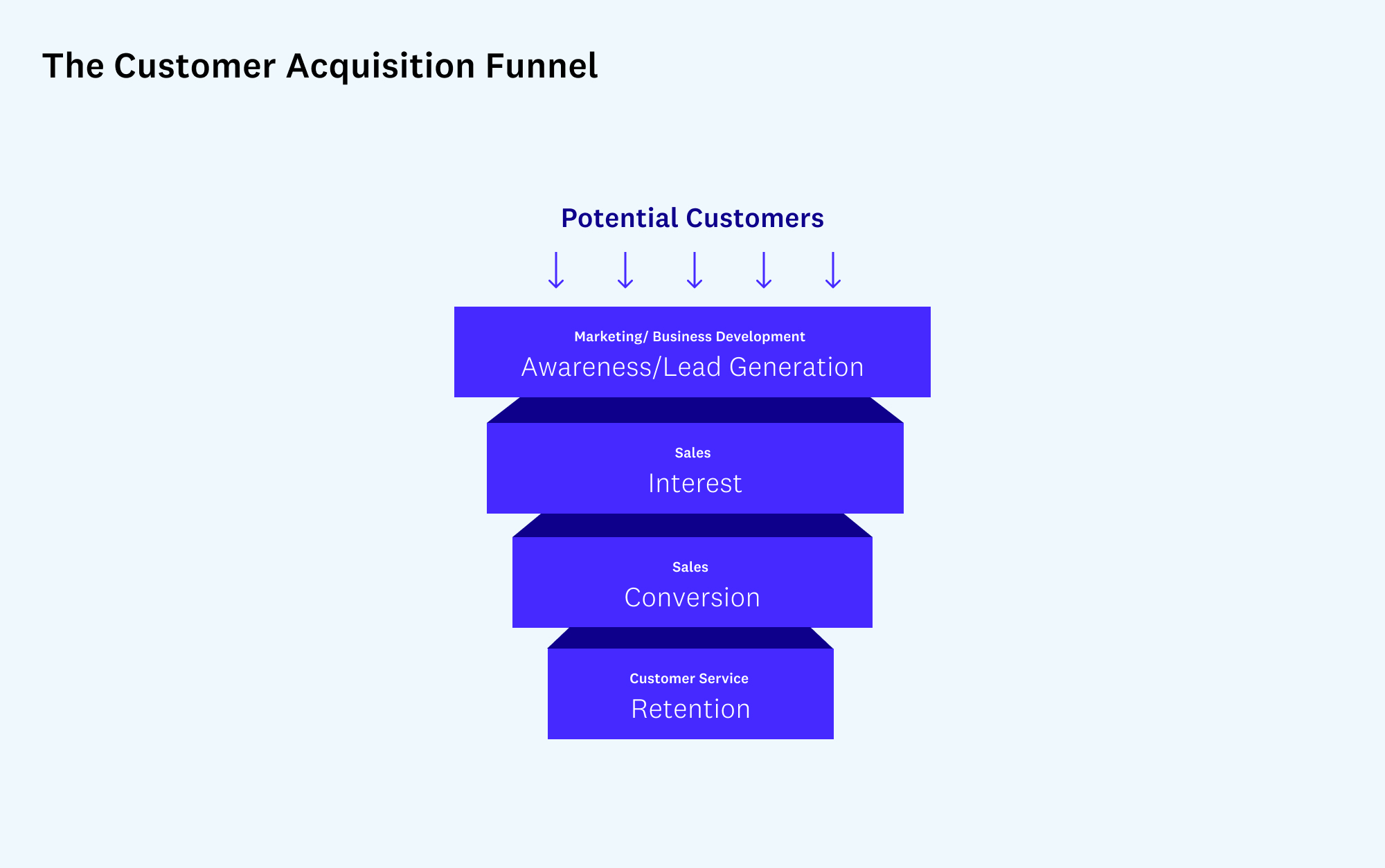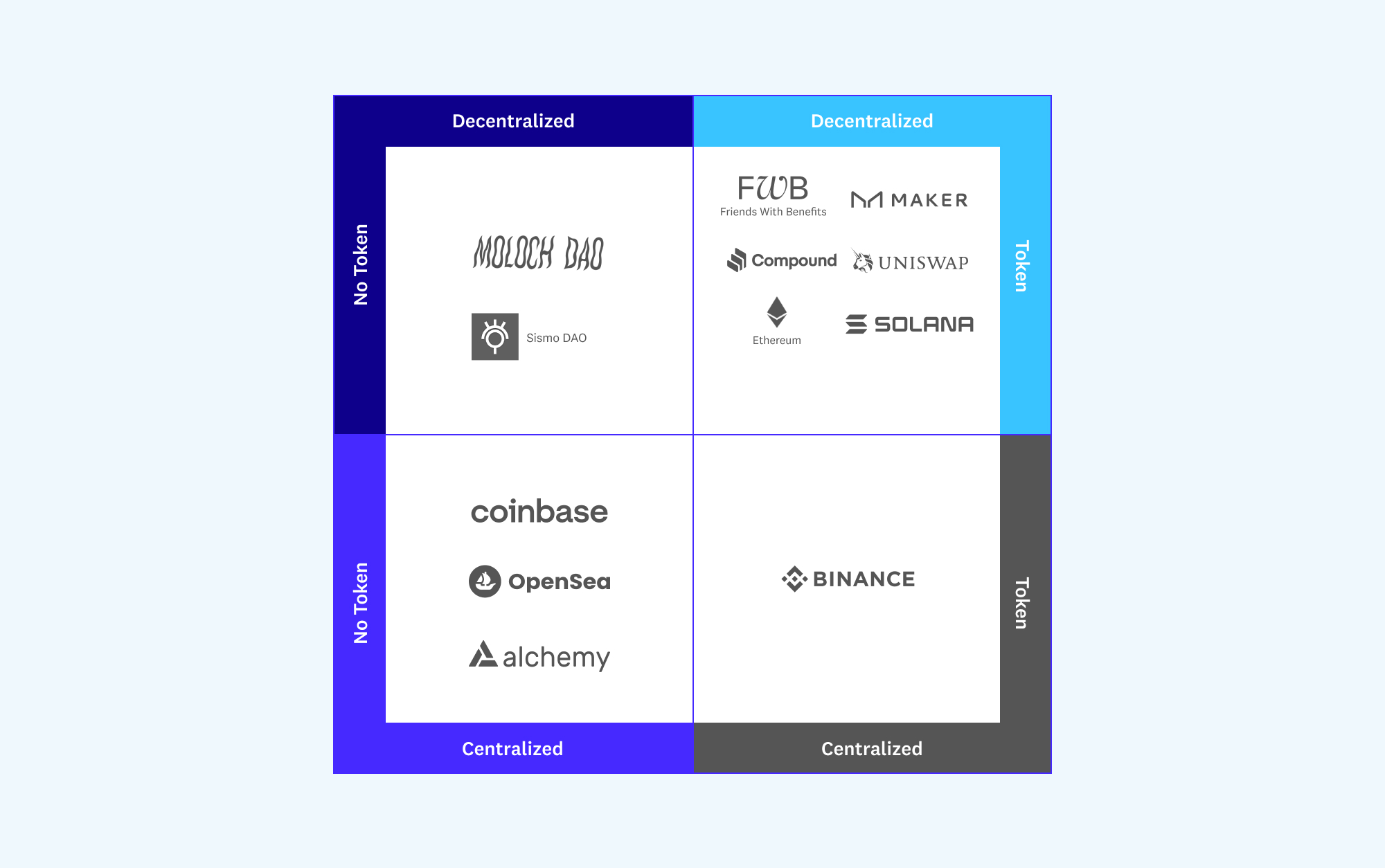
Every company faces some version of the “cold start problem”: How do you get started from nothing? How do you acquire customers? How do you create network effects — where your product or service becomes more valuable to its users as more people use it — that create incentives for even more customers to sign up?
In short, how do you “go to market” and convince potential customers to spend their money, time, and attention on your product or service?
The response by most organizations in web2 — the Internet era defined by large centralized products/services like Amazon, eBay, Facebook, and Twitter, in which the vast majority of value accrues to the platform itself rather than to the users — is to invest significantly in sales and marketing teams as part of a traditional go-to-market (GTM) strategy that focuses on generating leads and acquiring and retaining customers. But in recent years, a whole new model of organization-building has emerged. Rather than being controlled by corporations — with centralized leadership making all decisions about the product or service, even when using consumers’ data and free, user-generated content — this new model leverages decentralized technologies and brings users into the role of owners through the digital primitive known as tokens.
This new model, known as web3, changes the entire idea of GTM for these new kinds of companies. While some traditional customer acquisition frameworks are still relevant, the introduction of tokens and novel organizational structures such as decentralized autonomous organizations (DAOs) requires a variety of go-to-market approaches. Since web3 is still new to so many, yet there’s tremendous building in the space, in this article I share some new frameworks for thinking about GTM in this context, as well as where different types of organizations may exist in the ecosystem. I’ll also offer some tips and tactics for builders looking to create their own web3 GTM strategies as the space continues to evolve.
The concept of the customer acquisition funnel is core to go-to-market, and is very familiar to most businesses: going from awareness and lead generation at the top of the funnel to converting and retaining customers at the bottom of the funnel. Traditional web2 go-to-market therefore attacks the cold-start problem through this very linear lens of customer acquisition, encompassing areas such as pricing, marketing, partnerships, sales channel mapping, and sales force optimization. Success metrics include time to close a lead, site click-through rate, and revenue per customer, among others.

Web3 changes the whole approach to bootstrapping new networks, since tokens offer an alternative to the traditional approach to the cold-start problem. Rather than spending funds on traditional marketing to entice and acquire potential customers, core developer teams can use tokens to bring in early users, who can then be rewarded for their early contributions when network effects weren’t yet obvious or started. Not only are those early users evangelists who bring more people into the network (who would like to similarly be rewarded for their contributions), but this essentially makes early users in web3 more powerful than the traditional business development or salespeople in web2.
For example, lending protocol Compound [full disclosure: we’re investors in this and some of the other organizations discussed in this piece] used tokens to incentivize early lenders and borrowers by providing extra rewards in the form of COMP tokens for participating, or “bootstrapping liquidity,” with a liquidity mining program. Any users of the protocol, whether a borrower or lender, received COMP tokens. After the program launched in 2020, total value locked (TVL) in Compound jumped from ~$100M to ~$600M. It’s worth noting that while token incentivization attracts users, it alone is not enough to make them “sticky”; more on this later. While traditional companies do incentivize employees through equity, they rarely financially incentivize customers in a long-term way (other than through acquisition discounts or referral bonuses).
To summarize: In web2, the primary GTM stakeholder is the customer, typically acquired via sales and marketing efforts. In web3, an organization’s GTM stakeholders include not just their customers/users, but also their developers, investors, and partners. Many web3 companies therefore find community roles to be more critical than sales and marketing roles.
For web3 organizations, GTM strategies depend on where an organization fits in the below matrix, according to its organizational structure (centralized vs. decentralized) and economic incentives (no token vs. token):

Go-to-market differs in each of the quadrants, and can span everything from traditional web2-style strategies to emerging and experimental strategies. Here, I’ll focus on the upper right quadrant (decentralized team with token) and contrast it with the lower left quadrant (centralized team with no token) to illustrate the difference between web3 and web2 GTM approaches.
First, let’s look at the upper right quadrant. This includes organizations, networks, and protocols with unique web3 operating models, which in turn require novel go-to-market strategies.
Organizations in this quadrant follow a decentralized model (although they usually start with a core development team or operational staff) and use token economics to attract new members, reward contributors, and align incentives among participants. (For a deeper discussion of web3 business models and the seeming paradox of capturing value, check out this talk from a16z Crypto Startup School.)
The fundamental difference between the web3 organizations in this quadrant and those using a more traditional GTM model involves the key question: What is the product? Whereas web2 companies and those in the lower-left quadrant largely must start with a product that will attract customers (“come for the tools, stay for the network”), web3 companies approach go-to-market through the dual lenses of purpose and community.
Having a product and a solid technical foundation is still important, but it doesn’t have to come first.